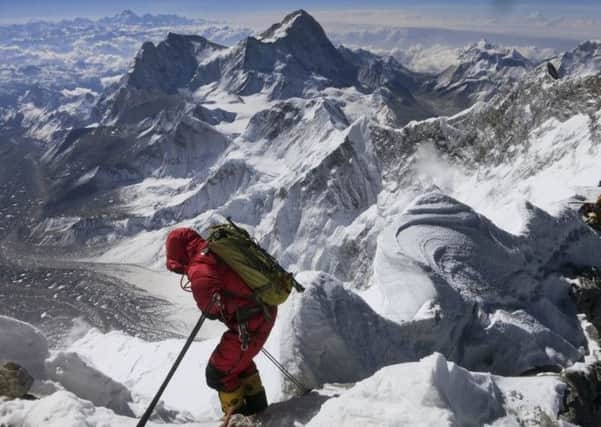Nepal cuts cost of climbing Mount Everest


It comes amid growing concern about the environmental effects of climbers who already crowd the mountain during the high season.
Madhusudan Burlakoti, head of Nepal’s department of mountains, announced yesterday that beginning next year, it will cost US $11,000 (£6,700) per climber to climb Everest.
Advertisement
Hide AdAdvertisement
Hide AdUnder the current rules, a single climber pays £14,900. But larger groups get discounted rates, with a group of seven paying £41,800. The discount encourages climbers to team up even if they have vastly different experience and barely know each other, Burlakoti said.
Now Nepal will charge a flat, per-person fee, regardless of the group’s size.
“We hope to attract more climbers and also at the same time better manage the climbing teams. This will allow the smaller teams and individuals more freedom when they climb Everest,” Burlakoti said.
The cost of climbing Mount Everest has drawn criticism by those who say the sky-high prices allow only the very rich to climb the peak. But environmentalists are concerned about the strain tourism puts on the mountain.
“The government should have done a proper study of the impact before deciding to allow more climbers on the mountain. More climbers would naturally mean negative impact on the mountains,” said Dil Bahadur Gurung of the Kathmandu Environment Education Project, a non-profit group working around Everest region.
Gurung said the high fees helped keep the number of climbers low.
Last spring, 810 climbers attempted to scale Everest from the Nepalese side. Garbage including food wrappers, climbing gear and oxygen cylinders has littered the mountain in recent years, and some people have referred to Everest as the world’s highest rubbish dump.
Italian climbing legend Reinhold Messner has called for Nepal to close down Everest for a few years for the mountain to rest and recover. But Nepal has refused. It collects millions annually from climbing fees.
Advertisement
Hide AdAdvertisement
Hide AdTens of thousands more Nepalese hotel owners, trekking guides and porters also depend on these climbers for their livelihoods.
Nepal has eight of the 14 highest mountains in the world. The fees for those peaks are much lower but are being reduced as well for the thousands of climbers who come to Nepal each year.
Ang Tshering, who headed a government committee to review mountaineering royalty and mountain tourism in Nepal, said the government plans to more strictly monitor climbers to make sure they bring down all their climbing gear, food wrappings and oxygen cylinders. “Our focus has been on minimising the negative impact on the environment in the Everest region,” Tshering said.
Hundreds of foreign climbers flock to the 8,850-metre (29,035-foot) Everest summit during the main climbing season stretching from March to May.
More than 4,000 people have climbed Mount Everest since the historic 1953 first ascent. Nearly 250 have died on its slopes.
Climbing historian Elizabeth Hawley said Everest was “terribly crowded” during the peak season. And allowing in those with no experience in serious climbing raised accident risks.
Sushil Ghimire, the tourism ministry’s most senior official, said the government was considering regulations obliging aspirants to climb lower peaks before attempting Everest.